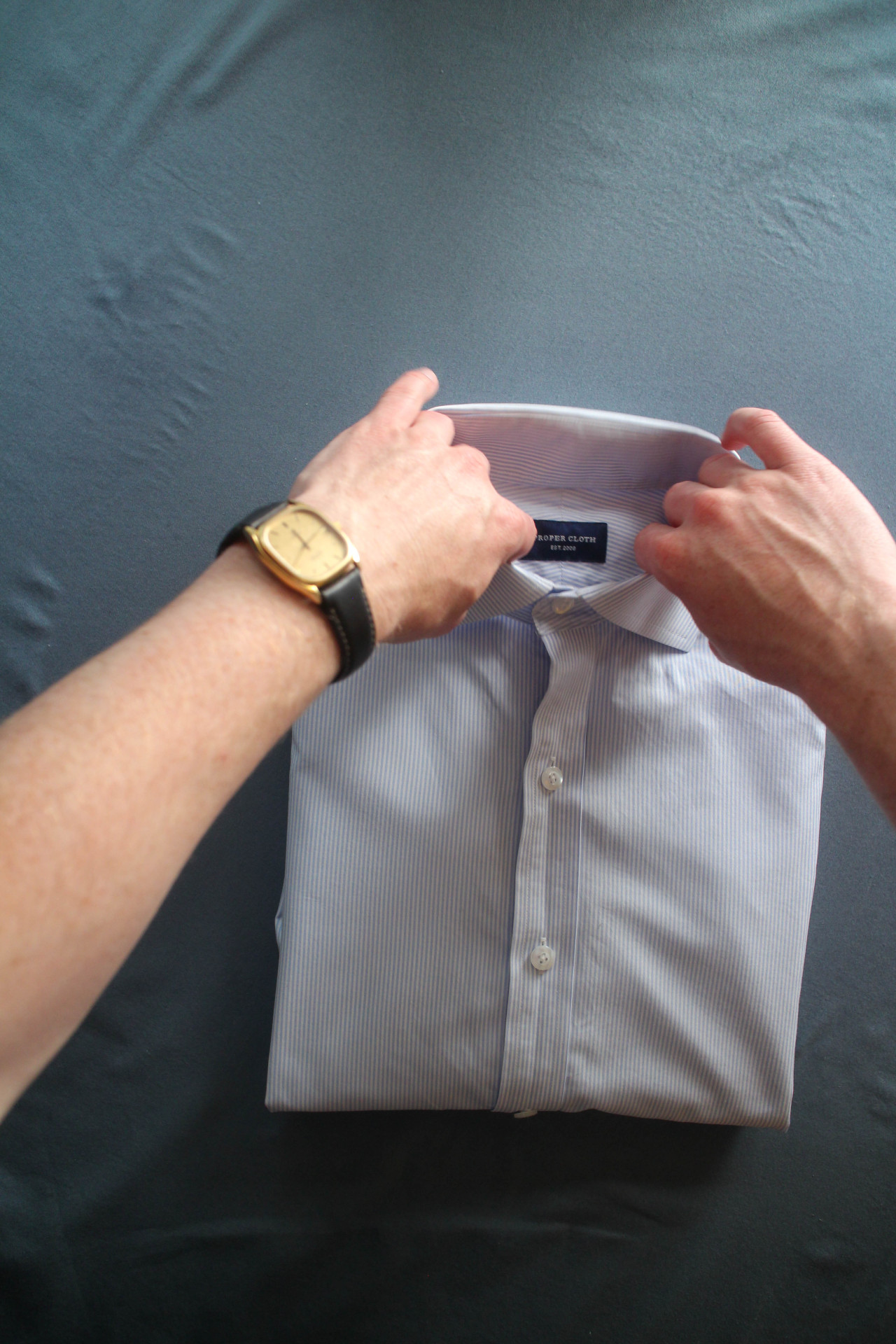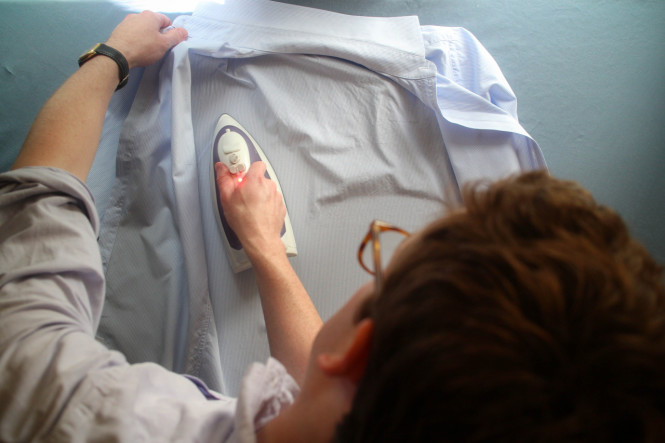I’ve seen many men talk about how relaxing, cathartic, and otherwise enjoyable it is to polish shoes. It’s one of those tasks that is perfectly fit for a slow Sunday afternoon, and it reigns supreme as the most popular clothing maintenance routine.
Ironing, on the other hand, doesn’t get any love from anyone and usually holds the bottom spot in most to-do lists. Some prefer to outsource the work to a local cleaner, and some just ignore the problem altogether (this is me, usually). Neither of these options is preferable, of course. Dry cleaning shirts is unnecessarily tough on the fabric, and professional washing and folding can get expensive quickly. There may be times when wearing an unironed shirt can work, but not when you need to look sharp.
As with most things, successful ironing comes down to the tools you use and the procedure you follow. I won’t claim to be an expert in this field, but over the years I have found a few ways to improve my end result.
My best ironing trick comes from the fact that I hate ironing boards. The big ones take up tons of precious space, the small ones are useless, and they all jam, squeak or frustrate me in one way or another. For that reason, I put a clean cloth over a table or countertop for my ironing surface. Of course, for this to work you must make sure that the surface and and cloth are clean, and that heat and moisture will not damage either (which, in turn, could also damage your clothing). I don’t want any angry emails from people that put an iron mark on their grandmother’s antique oak table, ok? Here, I’m using an old fitted bed sheet over an inexpensive IKEA table that I bought secondhand. I have also used stone countertops successfully. The advantage here is that I have much more space to iron in (a huge plus), and I don’t have to fight a rusty appliance in and out of the closet. All told, this change made a big difference in the amount of time it took me to iron a shirt and the quality of the end result.
When it comes to irons, there is a big range in quality and cost; I have never used a high-end one, but I’m sure that they are easier to use. That said, I don’t think they are strictly necessary. To me, the basic requirements of a decent iron are heat, even bursts of steam, and a water spray function. If you don’t know where to look for an iron, this Black & Decker model on Amazon is a good starting point (and is the one I would probably buy if I were in the market). Many say to use purified water; this is probably optimal, but I’ve never used it and been ok thus far. It’s also worth noting that shirts are easier to iron when they’re still damp from the washer, but this is not strictly necessary.
Ok, time to iron. Here’s what I do:
1. Start with the shirt sides. Don’t be afraid to use the steam burst button liberally to get heavy wrinkles out. Iron up to the seam running along the sides of the shirt.
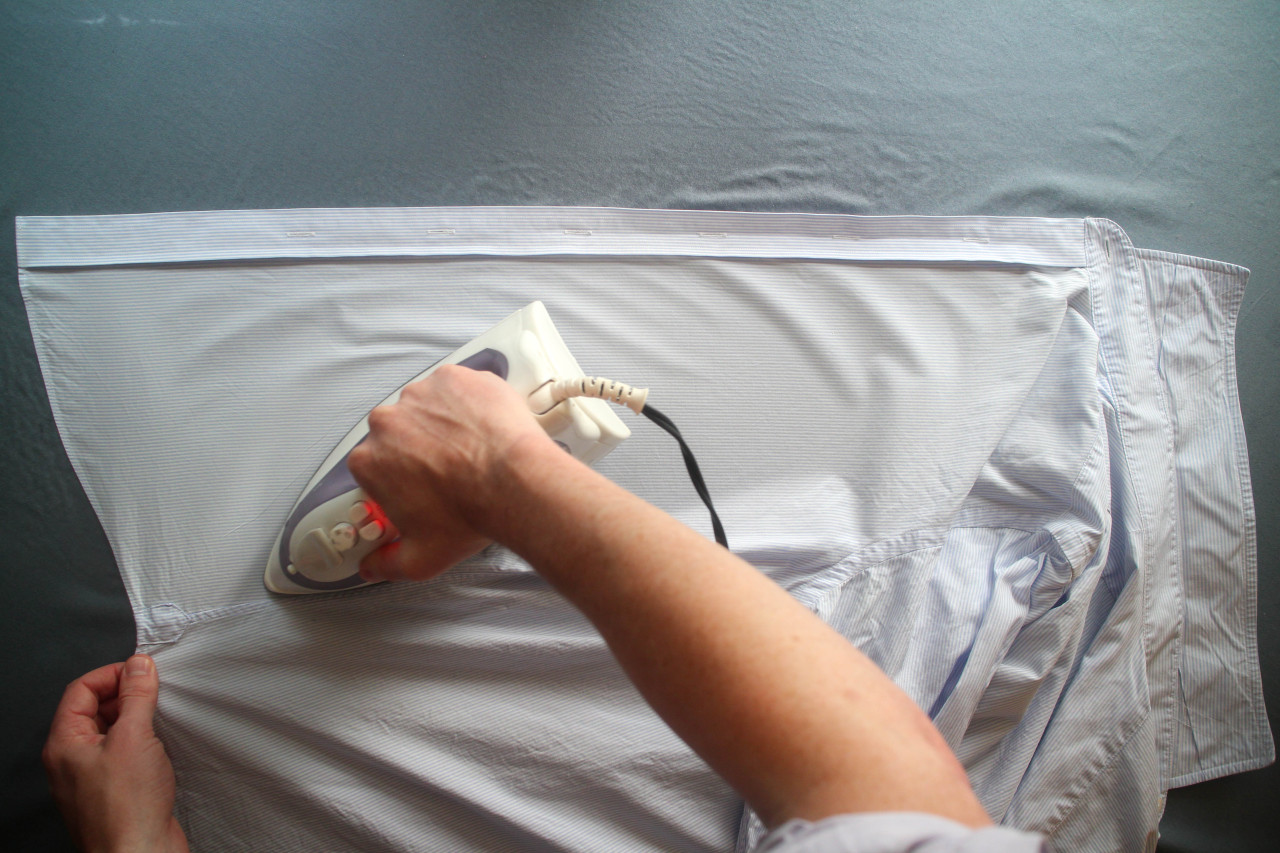
2. Move on to the sleeves. Lay them out flat and make sure to push out any wrinkles or folds, since you will be ironing both sides of the sleeve with one motion. If you have the time, flip the sleeve over and iron on the reverse side. Make sure that the gusset and cuff buttons are undone, and don’t forget about ironing the cuffs too.
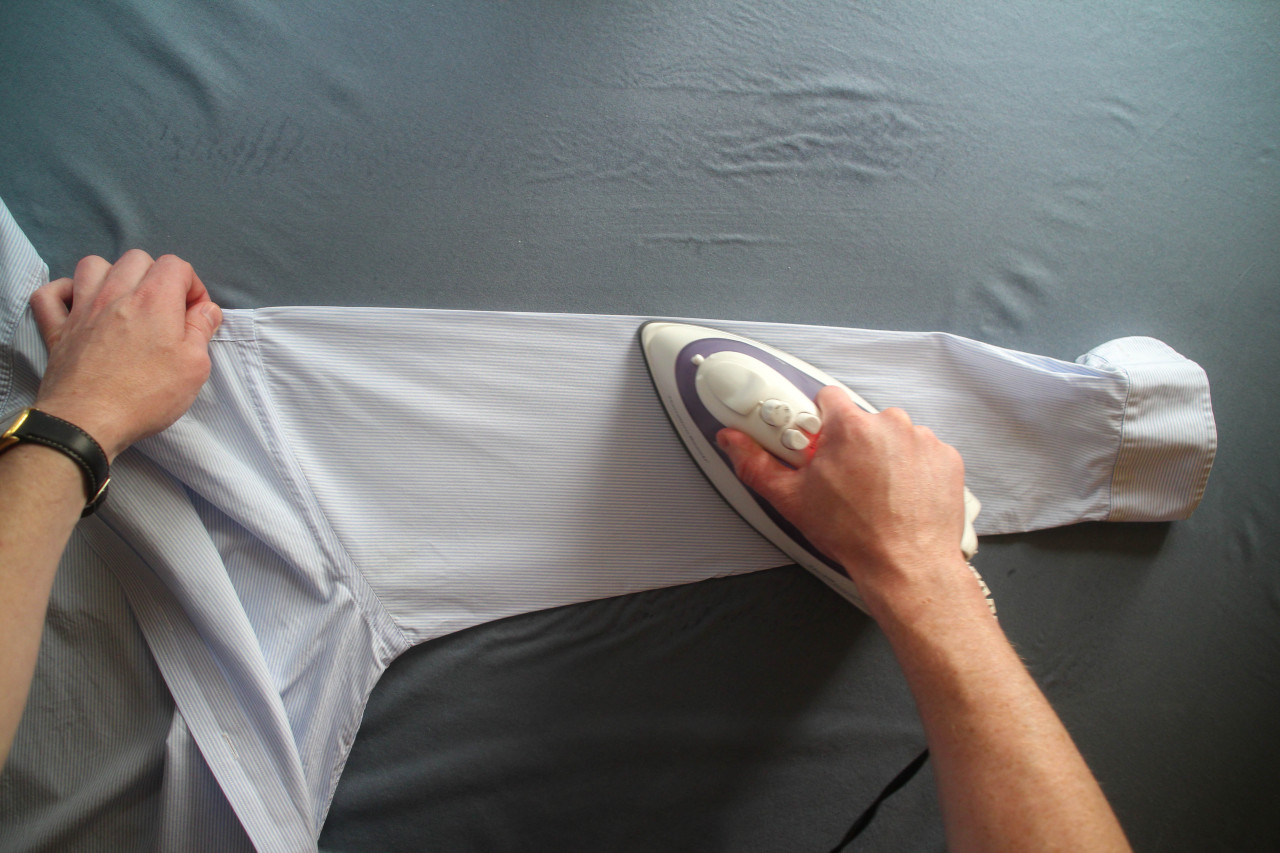
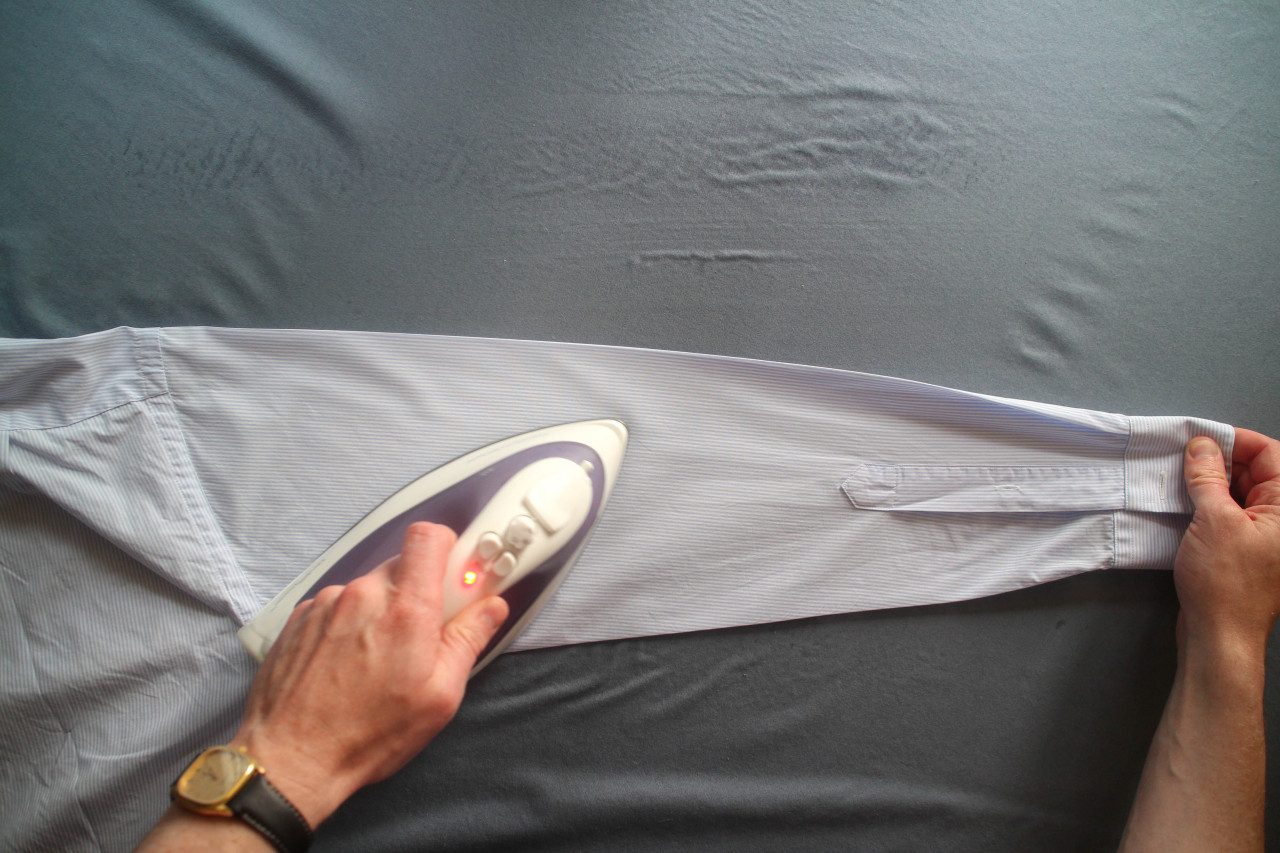
3. Iron the inside of the collar. Use lots of steam.
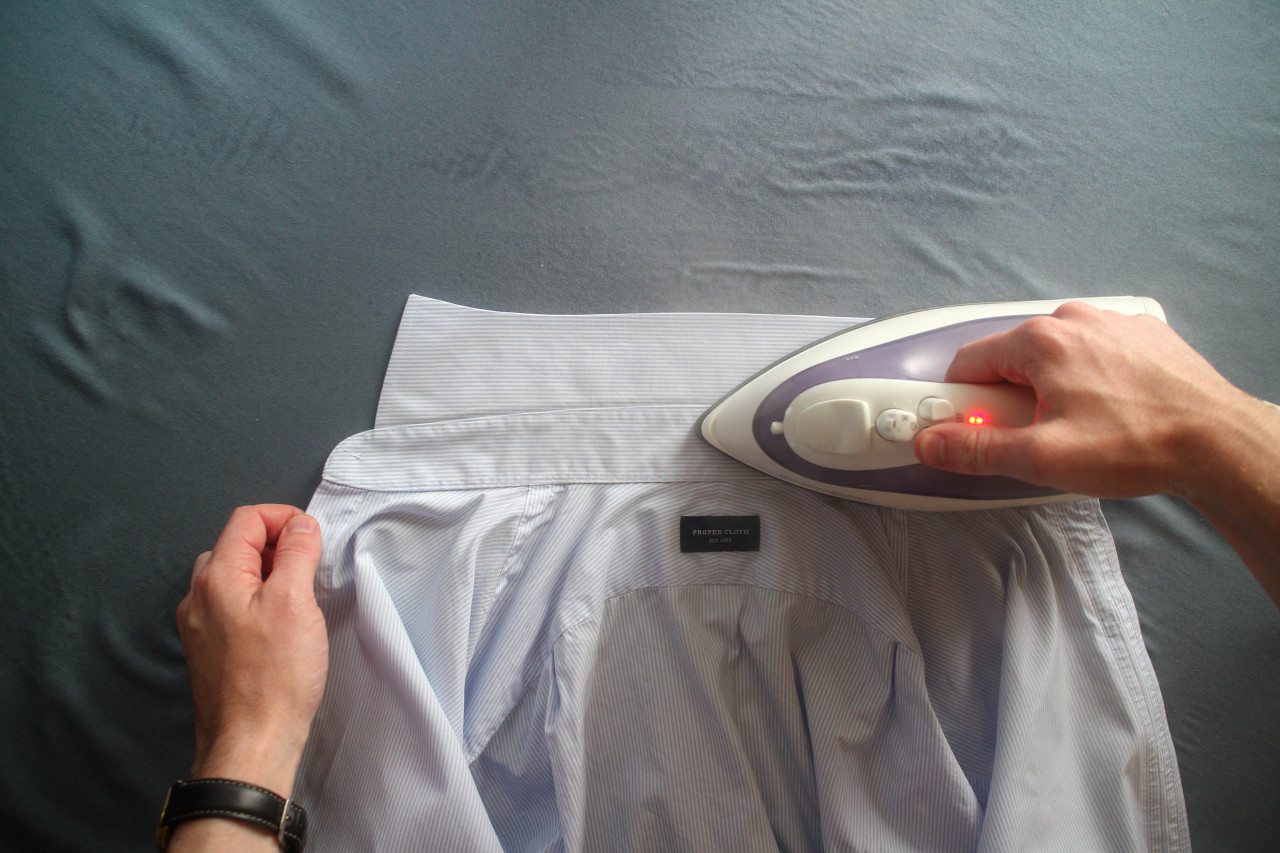
4. Lay the shirt out, facing up, and iron out the inside of the back panel. Take time to make sure that you’re getting all the edges and shoulders.


5. Button a center button or two and make sure the sides look ok. Touch up any areas that you may have missed earlier.
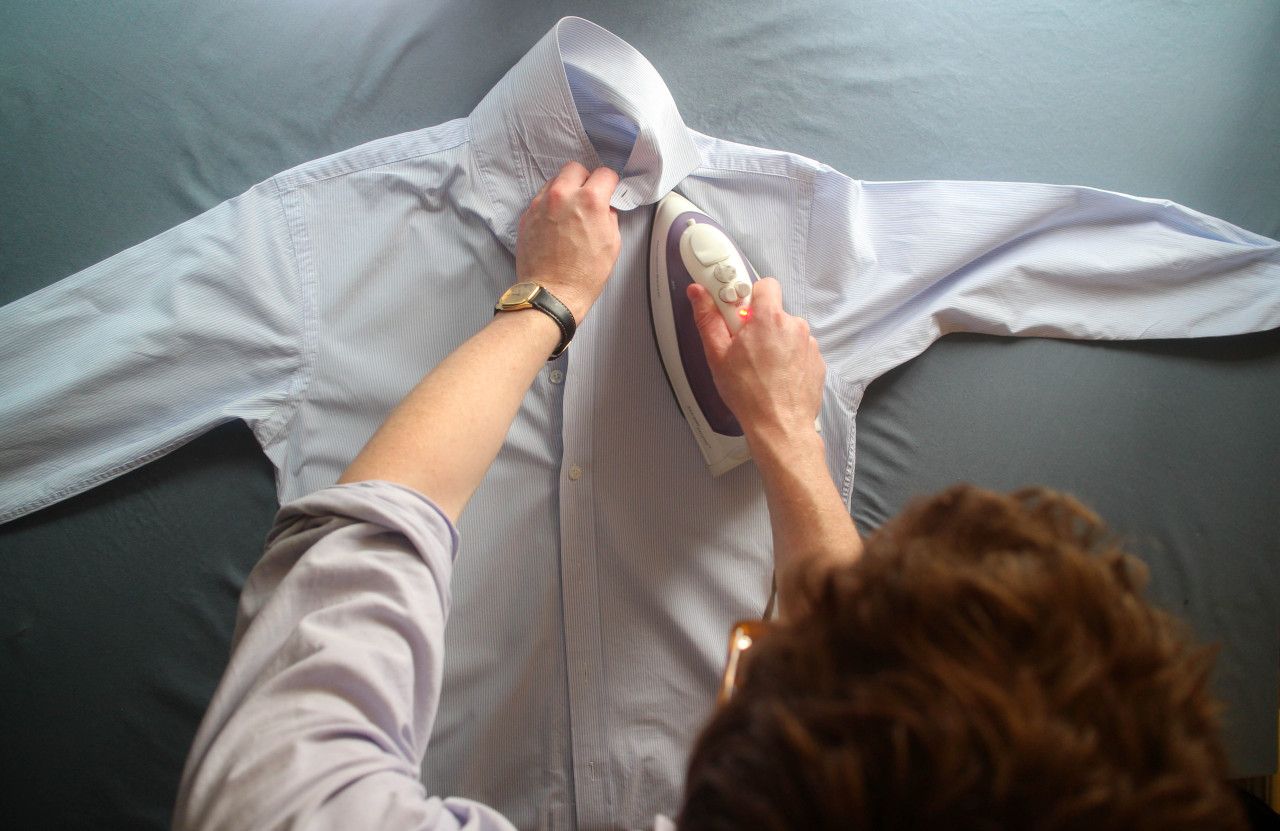
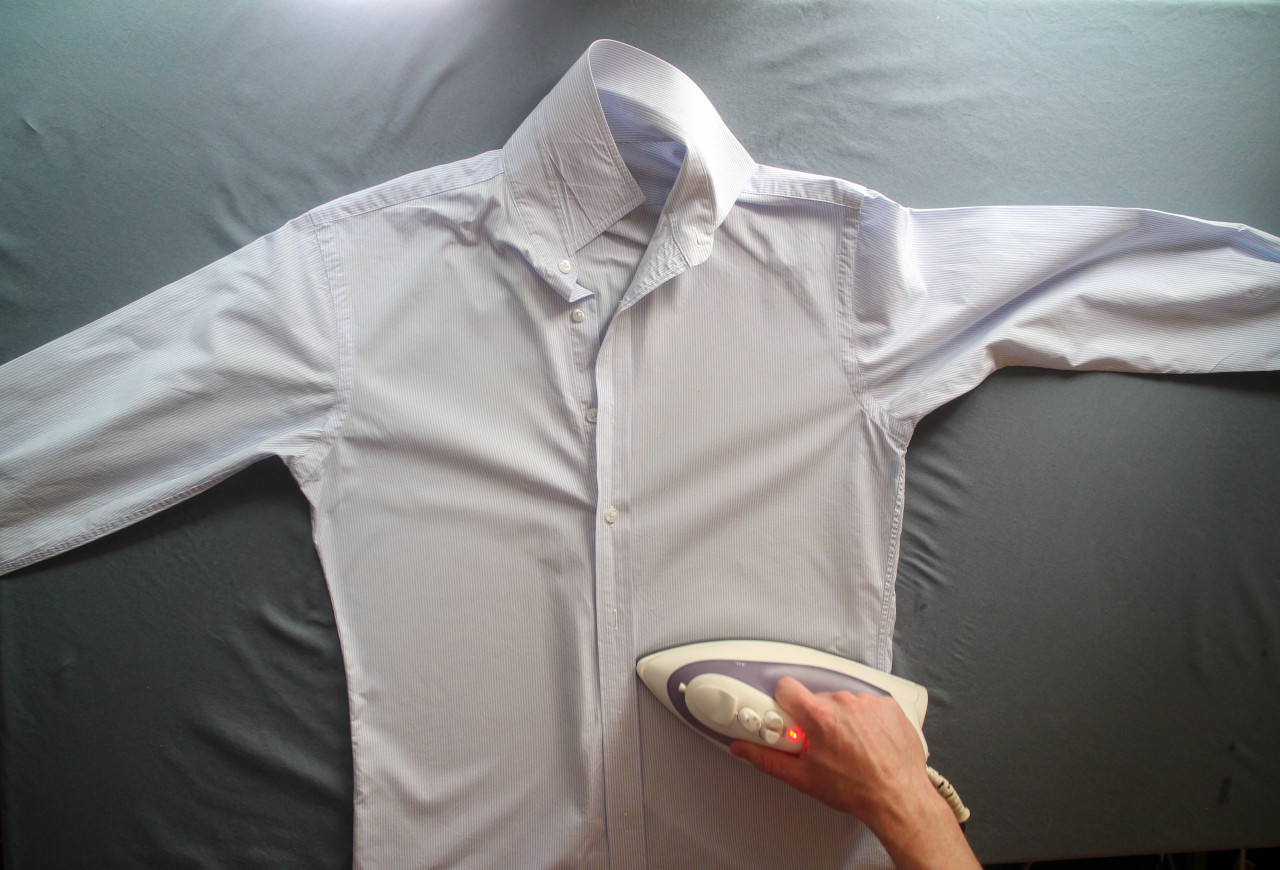
6. Fold it up or get it on a hanger. Or just put the dang thing on, because let’s be honest – you were doing this whole thing shirtless and you’re already fifteen minutes late for work.
